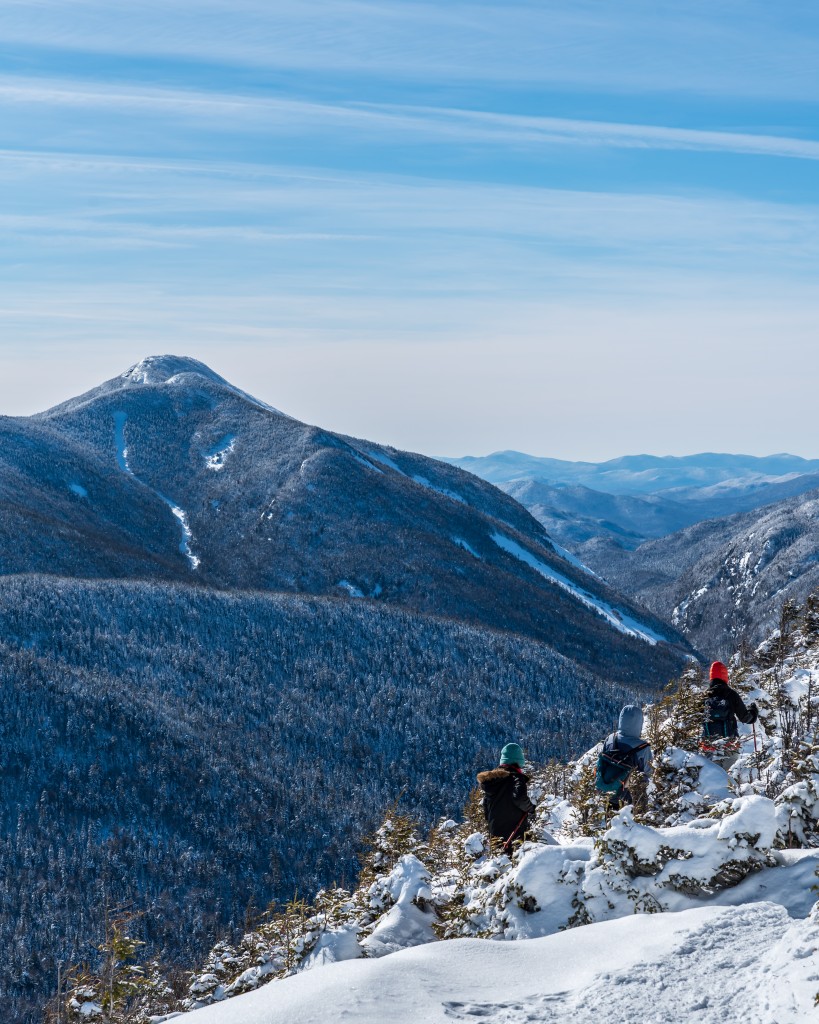Four Tips for Sharing the Trail this Winter
Four Tips for Sharing the Trail this Winter
Unlike the summer, where recreation groups are pretty well separated, trails are often shared by two to three different user groups in the winter months. Since these activities move at different speeds, there are a few things we can all do to ensure that everyone stays safe while enjoying their preferred form of winter recreation. Whether you are a nature-appreciating snowshoer or a thrill-seeking backcountry skier, here are four ways to share the trails safely and responsibly this winter.
Research the trail in advance
Before you go, use an online resource or a guidebook to determine whether the area you are visiting is multi-use. It is good not only to know who else is recreating with you, but also where you may or may not be allowed to go based on the type of recreation you are pursuing that day.
Some trails are made specifically for one type of recreation or split off in areas to separate user groups. The Avalanche Pass trail in the High Peaks Wilderness is a good example of this: about 3.5 miles in from the trailhead, the multi-use trail splits into separate snowshoeing and skiing trails, and then merges again a mile later. In this case, skiers should not use the snowshoeing trail, and vice versa for snowshoers.
Bring Your Snowshoes or Skis
Post-holing happens when someone “bare boots it” in snow without snowshoes or skis. Not only is this exhausting for the hiker in question, but it also leaves behind deep holes that can cause serious injury to others. By contrast, recreating with snowshoes or skis evenly compacts snow, creating a safer trail surface for everyone to enjoy.
Additionally, check local regulations before you hit the trail. Some areas may require you by law to wear snowshoes or skis if snow depths are greater than a certain amount. The High Peaks Wilderness, for example, requires them if snow depths are greater than 8 inches.
Don’t own either? That’s okay! Many places rent them out, including our High Peaks Information Center. Most outdoor retailers and centers in the Adirondack Park rent one or both of these items.

Yield to Uphill and Faster Traffic
Just as in summer, it is always courteous to allow those who are heading uphill or moving faster to pass you. In those instances, go one step off-trail to allow people to pass. Communication is key here, as some people might be unaware that someone is behind them or interested in passing them.
Along these lines, if you need to take a breather or want to enjoy a scene, you will also want to step off-trail to do so. Stopping in the middle of the trail not only obstructs other recreators who are passing you but could also cause a collision if someone is moving quickly and doesn’t see you in time.
Stay in Control
For the skiers in the room: we know how exciting downhill runs are, but when recreating on busy, multi-use trails, please stay in control at all times. Before starting a downhill section of trail, check to make sure no one is ahead of you and announce yourself if you encounter others on the way down. Backcountry trails are often narrow, so there isn’t much room for bailing out if you turn a corner too fast and catch someone by surprise.

Related
ADK Trip Planning Sessions
Need help planning your backcountry adventure? Schedule a personal, online session with an ADK staff […]
Benefits of Visitor Use Management
Since the creation of some of the first parks and protected areas in the United […]
Mud Season: Quick Facts
Just what is mud season? Running anytime from late March into mid-June—it varies each year […]
Spring on the NPT
by Jeffrey Case In the Spring a fuller crimson comes upon the robin’s breast; In the […]

